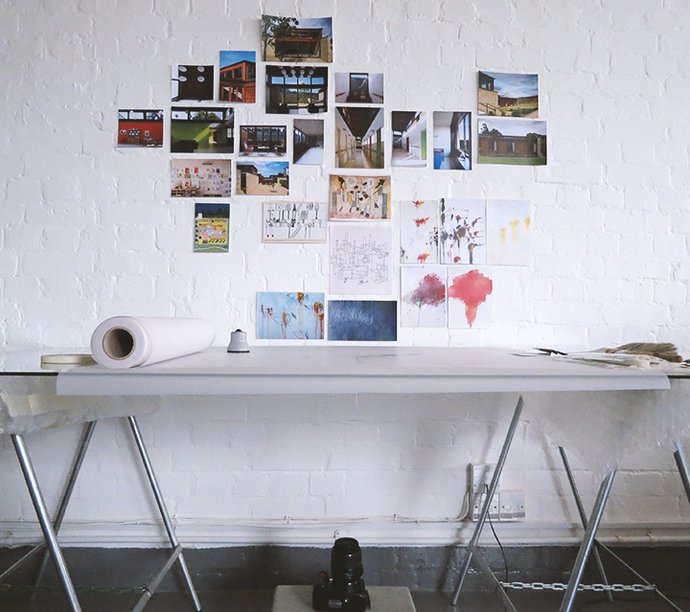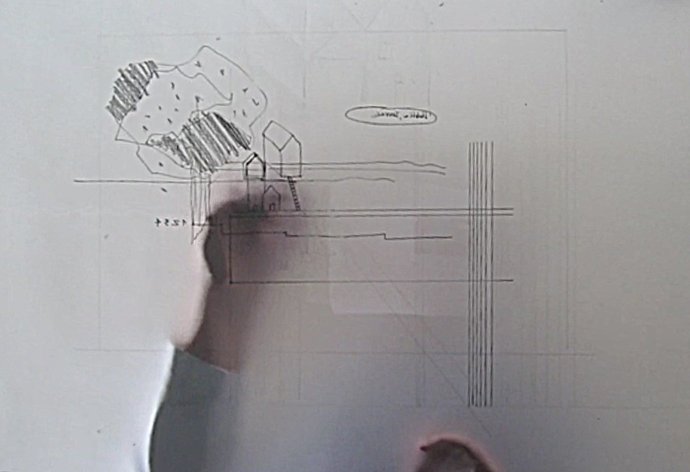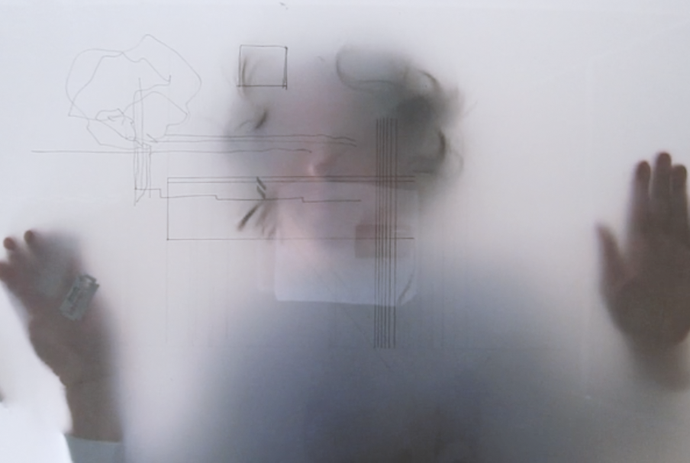Milky Surface

How can we attempt to draw a building as experienced in time rather than as a fixed entity? From early in the project, it became apparent that a static architectural drawing with still lines and sign conventions would be inappropriate for our project. The moment you draw a line on the page, you freeze representation into a singular deterministic outcome. But what happens if the line is never still? What happens if the process of creating the drawing with all its certainty and hesitation is being captured in time, recorded and projected as an animation at full scale?
The mind is in constant flux: it observes, remembers and projects in multiple and unpredictable ways; constantly shifting and distorting the reality it encounters. To explore this kind of experience, we employed hand-drawing where the act of drawing valued as much as the final outcome. We created an analogy between inhabiting the world and inhabiting the page. We found parallel associations between the mind wandering in rooms and the hand sketching on sheets of paper.
For our first experiment, we set a glass surface on trestle legs and put tracing paper on it. We started drawing from above filming from below. The camera captured all thoughts falling on the page: lines being made and erased. What was gradually appreciated was not the figure of the drawing but the presence of the drafters and their tools, their hands and occasionally their faces, pens, rubbers, sharpeners and rulers.

When we watched the recordings, we saw milky drawings being made, erased and remade with continuous activity. We thought that the sounds of the drawing being made were as evocative as the figures: inking, scratching, crayoning, rubbing out, tapping. The pacing of the act of drawing — slow or fast, paused or manic — was arresting.

Bit by bit, we filled the wall behind the desk with images of The Orchard Centre and paintings by Paul Klee and Cy Twombly. More experiments followed.
We wondered whether many people and hands could be involved in drawing, all trying to represent the same place, capturing differences in content and technique. Might a collaborative way of drawing better express the intersubjective ways in which a place is experienced? We kept drawing.